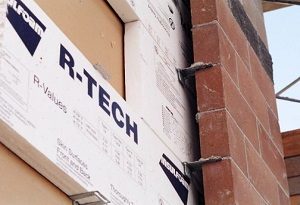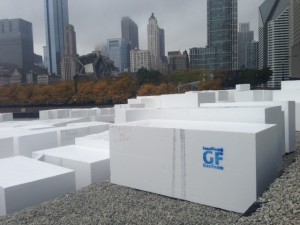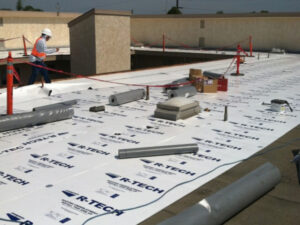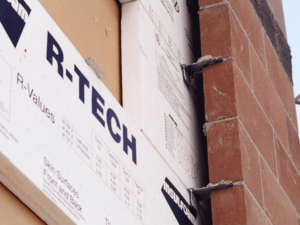A Commercial Perspective on R-values for Exterior Walls
In our last post, Measuring a Residential Exterior Wall’s R-value – EPS above the Rest, we illustrated how closed-cell, lightweight expanded polystyrene (EPS) can raise exterior wall R-values in residential applications. But, does the same hold true for commercial projects? And, do commercial buildings’ R-value requirements differ from residential R-value requirements? Yes, and yes!
Chapter four of the International Energy Conservation Code (IECC) states that R-values for “wood framed and other walls, above grade” should be at least 20 for commercial buildings in Climate Zone 1. However, as the IECC also shows, R-value requirements vary by climate zone; building composition (for example, metal building versus wood framed); and insulation location (roof, walls, floors, etc.). So, builders will need to consult an insulation climate zone map and an R-value compliance requirements table like this before getting started.
Once building teams have determined the exact R-value requirements, the next question becomes: which continuous insulation (ci) products raise and maintain a building’s insulating power? Just like with residential projects, EPS stands out in commercial settings compared to extruded polystyrene (XPS) and Polyisocyanurate (Polyiso).
 EPS versus XPS and Polyiso
EPS versus XPS and Polyiso
To review, ci is a layer of insulation covering wood and steel studs, joists and other framing members. It helps reduce hot or cold air from escaping. The IECC mandates use of ci in the building envelope in most climate zones.
Major ci products include XPS, Polyiso and EPS. Manufacturers use blowing agents to make the first two, a method that initially raises R-values. But over time, these agents diffuse out of the materials, resulting in lower R-values. EPS manufacturers, however, do not use blowing agents. This means builders can expect stable R-values when using the material. Don’t forget to check product warranties to verify whether R-values will maintain or decline throughout the product’s time in service.
With EPS poised as a leader in long-term performance, let’s explore how the ci product plays out in commercial applications:
Applied commercially, lightweight EPS insulation products offer excellent moisture resistance. Moisture resistance is an important factor relating to R-value, as insulations that retain high moisture volumes lose up to half of their insulating R-value. Put another way, because damp insulation is less effective at blocking heat flow versus dry insulation, moisture performance is crucial to maintaining a high R-value.
In application, EPS absorbs small amounts of moisture quicker than other ci products like XPS. But, more importantly, EPS releases water much faster than XPS. In a side-by-side comparison by independent testing agency Stork Twin City Testing, the study found EPS to be four times drier than XPS. After 30 days of drying time, that number jumped to 22%. What does this mean? EPS insulation returns to high thermal resistance faster than XPS does.
For commercial wall insulation projects, moisture resistance as related to R-value helps projects meet required energy codes and can contribute towards LEED® credit requirements.
Conclusion
So the next time your commercial project calls for ci in walls above grade, consider EPS. You’ll meet and maintain R-value requirements while enhancing a building’s energy efficiency.




